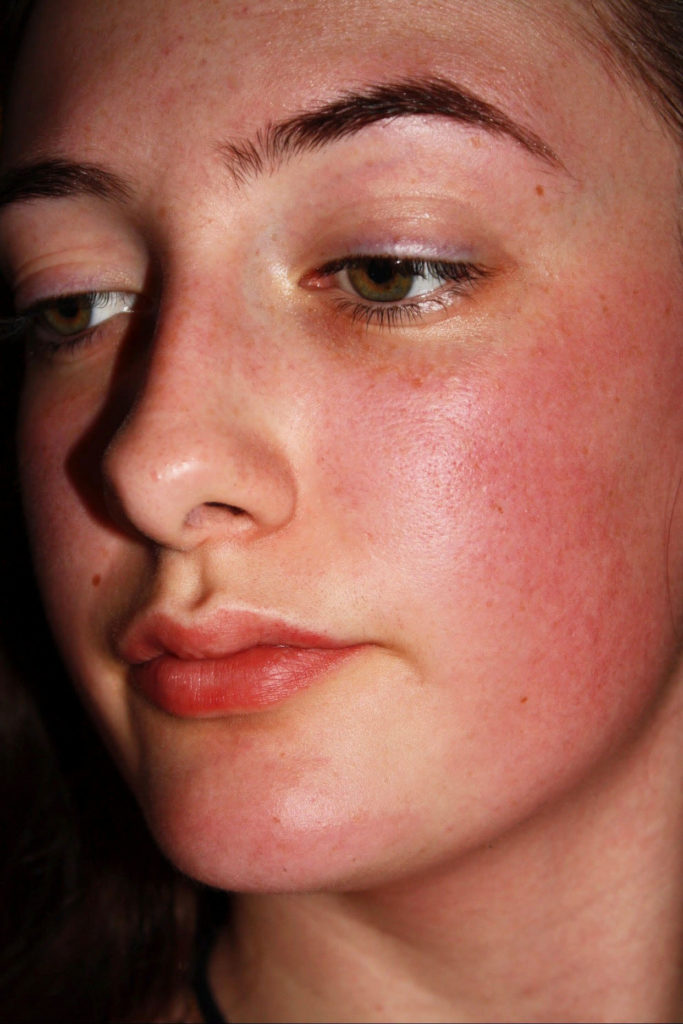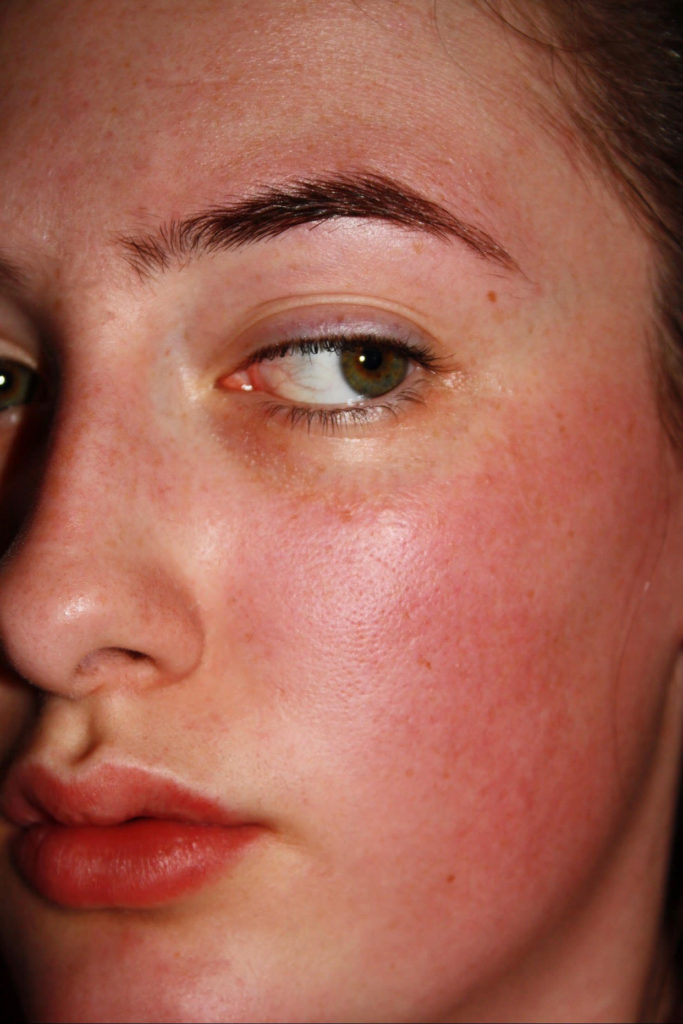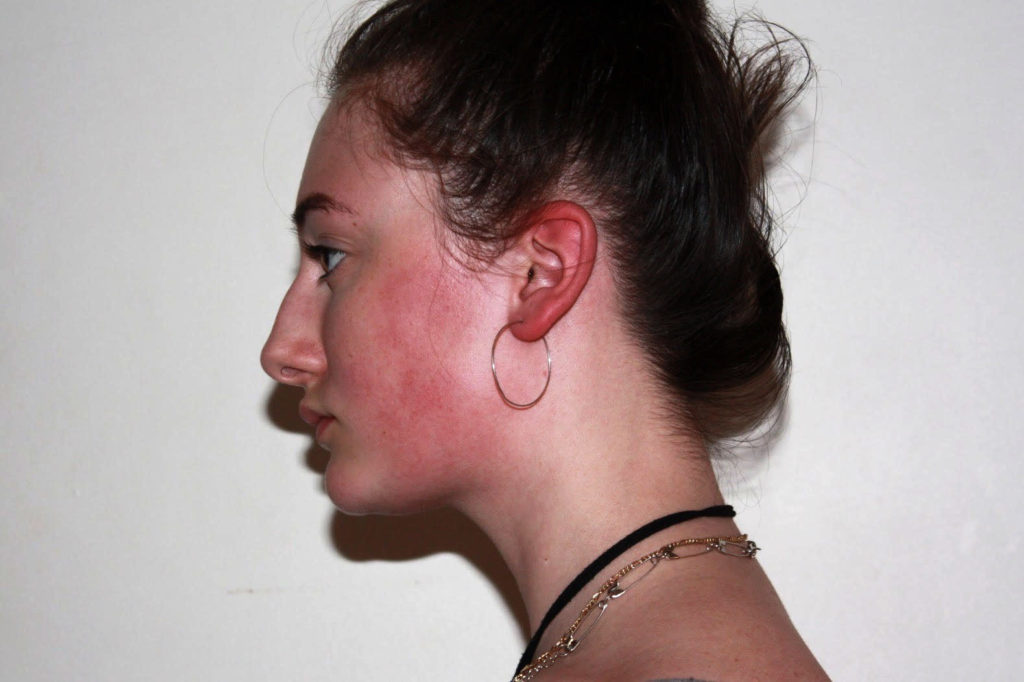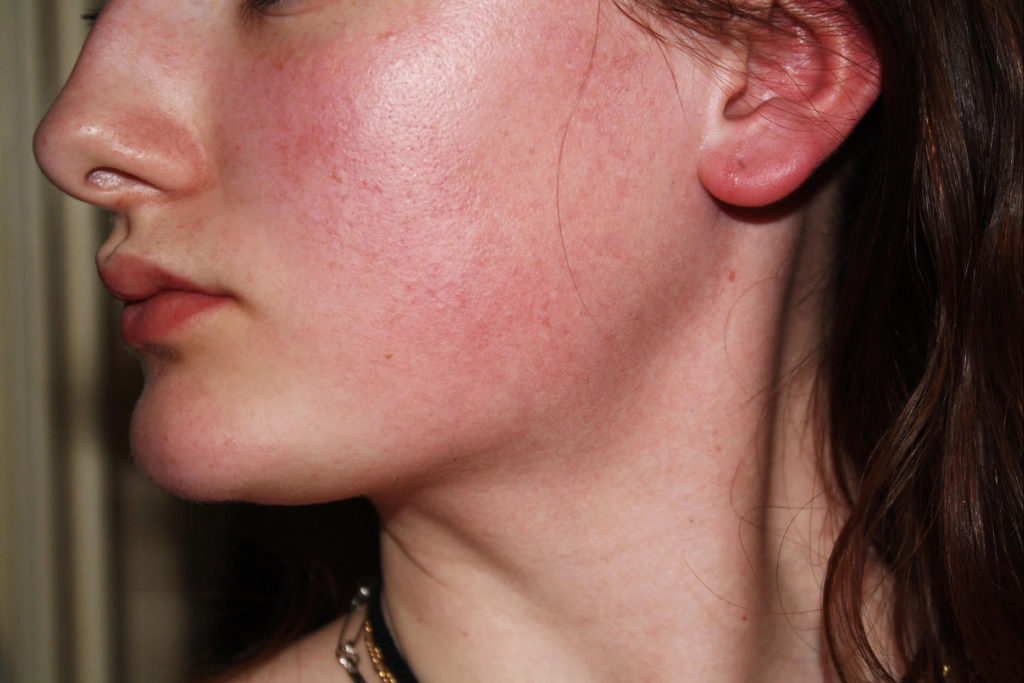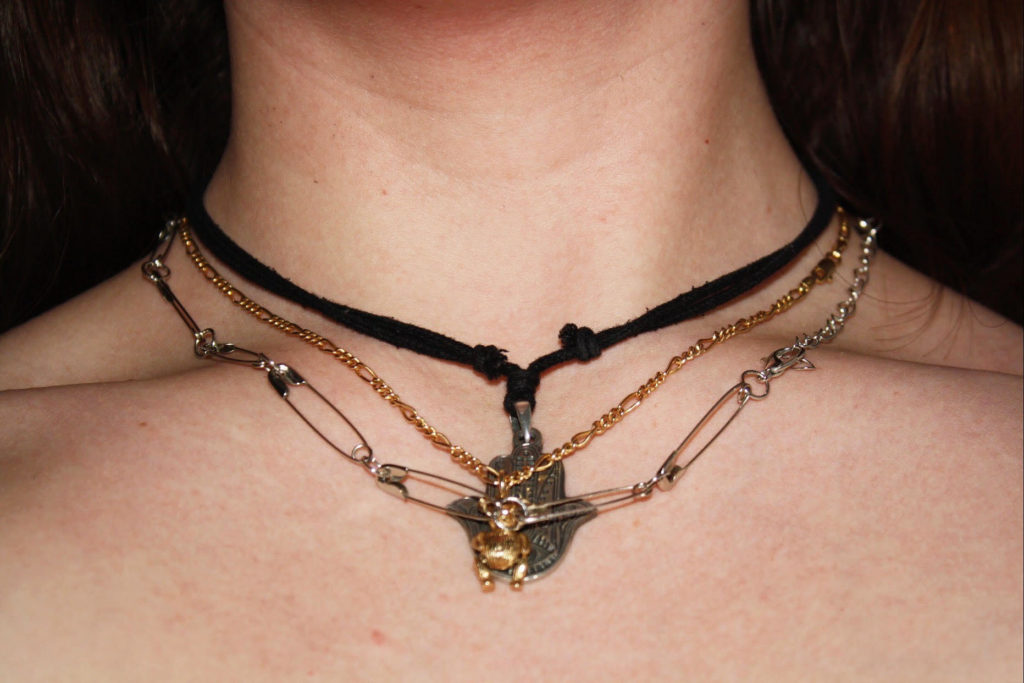- For my first photo shoot I am going to be taking photos of my boyfriend and me in front of a white wall doing a different variety of poses such as, hugging, looking at the camera and many others. I want to portray an ameliorative side of the relationship
- For my second photo shoot I am going to again take photos of me and my boyfriend and I, but I will be portraying a pejorative view of a relationship instead to show a contrast.
- For my third photo shoot I will be taking photos of my friends relationship and showing a ameliorative view of their relationship.
- For my fourth photo shoot I will be taking photos of my friends relationship and showing a pejorative view of their relationship.
Daily Archives: December 16, 2019
Filters
Shoot 2 – Uncomfortable Skin
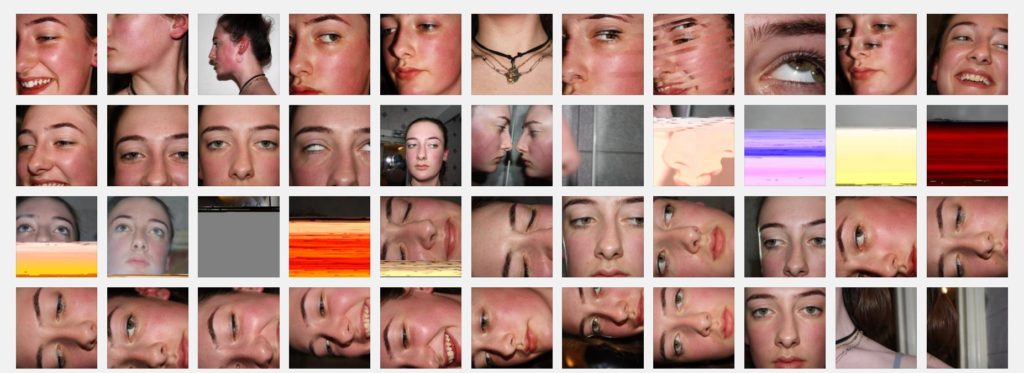
Montages of images
Evaluation
For this photo shoot, I firstly attempted to take formal portraits in which I had my camera on a tripod with a timer and flash. This set up however wasn’t working in my favour and the images weren’t conveying any emotions. So, I removed the camera from the tripod and took flash selfies on close up mode. This method aided me in expressing emotions and having physical control over the camera creating movement within my images too. I’m happy overall with my final images due to the fact that they are full of signals and hints as to how i’m feeling making it easier post shoot, with almost no editing. My successful images are my uncomfortably close up portraits due to the simplicity of them and almost no editing due to a simple expression conveying my message. I also followed my shoot with beginning experimentation with montages following along with my theme of destruction and erasure of identity.
Photoshoot 1 Plan
For my first photoshoot I am going to go out and do some landscape photography of bunkers and fortifications created by Germans for use in the war. I am going to take these images from a few different bunkers from the west side and south side of the island. I am likely going to go out during the day, I may wait for sunlight, and use natural lighting techniques to get clear images of the bunkers. Using photographic archives such as Societe Jeriaise, I am going to likely try and use photographs of bunkers and fortifications from when they were built to show how the bunkers have changed over time as parts may have eroded and look older. This will help me create a simple story of change and remembrance in the bunkers throughout Jersey and its history.
Edward WESTON
- Edward weston is an american Photographer which was popular for his take on modernism and straight photography.
- In 1908 he briefly worked at the photography studio of George Steckel in Los Angeles, as a negative retoucher.
- In 1910 Weston opened his own business, called “The Little Studio”
Quotes:
” Similar to images used by the Surrealists, Weston’s high resolution, realist photographs of organic forms and modern marvels encouraged viewers to reconsider seemingly mundane objects and form new associations with them. ” (Henderson and McCain, 2019)
“Weston helped bring the medium out of the Victorian age that favored pictorialist imitations of painting and into the modern era wherein photography became a celebrated medium in its own right.”(Henderson and McCain, 2019)
Image Analysis:
Bibliography:
Henderson, K. and McCain, S. (2019). Edward Weston Photography, Bio, Ideas. [online] The Art Story. Available at: https://www.theartstory.org/artist/weston-edward/ [Accessed 16 Dec. 2019].
ARTIST STUDY: NICK HEDGES
LIFE AND CAREER:
To date, little has been written about Hedges or the Shelter photographs. Previously overlooked as a subject for academic study, the Shelter photographs have, until recently, remained out of the public eye and consciousness. Showcased in high-profile exhibitions and reviews at the time of their making in the late 1960s and early 1970s, the photographs have since been somewhat forgotten, and to a certain extent written out of, the history of British photography. Primary source material on Hedges and his work has, until now, focused on his other photographic projects, notably his study of factory workers entitled Born to Work (made between 1976 and 1978)18, his documentation of religion, entitled I’m A Believer (made between 1976 and 1977), and his study of the North Shields fishing industry in 1979. The two former series focused on the West Midlands, Hedges’ birthplace. After obtaining an Arts Council grant in 1982, Hedges was subsequently able to publish the Born to Work photographs, accompanied by a text written by Huw Beynon, in a book entitled Born to Work: Images of Factory Life. These photographs were the subject of a large exhibition of the same name held at Wolverhampton City Archives between 4 October and 21 December 2013.22 They were also featured alongside the work of photographers John Bulmer and Peter Donnelly in the exhibition Black Country Echoes. (Hall, A, The University of Birmingham, 2015, p.6,7)
PROMINENT IMAGES:





IMAGE ANALYSIS:

VISUAL:
In terms of the visual aspects of this image there are multiple aspects which can be looked at. Firstly the scale is important as the people in the foreground of the image are overshadowed by the towering block of flats in the backdrop. The black and white color scheme is also important to the overall emotive aspects of the image as they monochromatic nature of the images provokes a sense of depression and melancholy. It is quite a dynamic image in terms of the sense of movement which is gained from the action of the children playing within the enclosed space between the buildings. The light within this image is also an important factor as the light coming in from the the central top half of the image casts a dramatic shadow upon the buildings which adds to the overall depressing tone of the image. There is a sense of repetition in this image with the rows upon rows of windows leading the eye to the center of the image. A theme which also comes through when looking at this photo is control and encasement with portrayal of the courtyard between the high rise of flats, the children playing on concrete rather than an open field with soft grass.
TECHNICAL:
In terms of the technical aspects of this image, conceptually it is know that these images were taken between the 1960’s and 70’s by hedges, at which point the only photographic aperture were film cameras. For this fact we can see that the image has a grainy effect, in black and white and is traditionally conformist to what images looked like within this time period. The combination of the grain and monochromatic color scheme means that the image provokes feelings of nostalgia and childhood as if you’re looking through your own archival history.
CONCEPTUAL:
” Most cities in Britain manage, or try, to hide away any tragedy that is endemic to them. But in Glasgow the tragedy is apparent as you roll slowly thought what remains of the Gorbals towards Central Station. It is apparent in the number of times disaster hits the city, every year some tragic event reinforced its reputation upon the rest of the country. A tenement fire, a gas mains explosion, a football crowd disaster, the shipyard crisis, the unemployment rate, another fire disaster; the list is endless….. One thing I couldn’t find was soul, identity, character – but you cannot plan for this, it happens by chance, it grows through shared experience and by necessity through shared hardship as well as happiness. That’s how I see it. I could well be wrong; I could well be wrong to bother about identity or character. East Kilbride had many virtues which I found lacking in other new developments I visited, but I couldn’t live there it would have been so dull. I do know that most of Glasgow families I’d seen would have moved there as soon as they were able, and that’s the most important judgement.” ( http://www.shelterscotland.org/lifeworthliving/about/nick-hedges, Shelter 2015, Scotland)
CONTEXTUAL:
Little has been published about Shelter as an organisation, and such writing that does exist does not feature Hedges, or his photographs, as a topic of study. The main sources of information are two books, both written by Des Wilson who was the Director of the charity between 1966 and 1971. The first, entitled I Know it was the Place’s Fault, was published in 1970. 44 The second, entitled Memoirs of a Minor Public Figure, is an autobiography published in 2011.45 Both texts are useful in their provision of an historical, if one-sided, account of Shelter’s formation and activities. The earlier text is particularly interesting in its discussion of the charity’s groundbreaking media campaigns, constructed around Hedges’ photographs. Although it features twelve of Hedges’ photographs as illustrations, there is no discussion of them, or how they were made. The second text features two of Hedges’ photographs as illustrations, but is equally devoid of any direct engagement with them. Perhaps it is not surprising that the photographs, although central to Shelter’s campaigns, are somewhat overlooked. The focus of Wilson’s accounts is the establishment and success of the charity, not an analysis of photographic meaning. Equally, both texts are written from Wilson’s perspective: one, a personal account of his role as Shelter’s Director, the other, an autobiography. Whilst central to an historical understanding of the charity, Hedges’ photographs have little bearing on Wilson, or an account of his life. Hedges’ own relative silence regarding the Shelter photographs and their lack of public exposure may also have contributed to Wilson’s disinterest in them.
Planning: 4 Photoshoots
Shoot 1: I am going to do a photoshoot on my response to paul strand, this is going to be a self portrait.
Shoot 2: For this photoshoot I’m going again to do a self portrait, but this time its going to be a response from Edward Western.
Shoot 3: For this shoot, I am going to take images of my surrounds so for example Where I live now, where I use to live, Inside my house.
Shoot 4:
Photo-shoot 2: Planning
For my second photo-shoot, I have decided to focus on breaking stereotypical female gender roles. With this approach, I will take a more historical look into the stereotypes of gender, as I feel that comparing the progress in the way women are viewed as individuals provides a very obvious example of the way that gender roles have developed and changed over time. I will be focusing on the more subtle differences in the way women are treated and perceived (both positive and negative sides), and will be showing contrast between images throughout the photo-shoot.
I will be focusing on the strength of individual women in comparison the the way in which they are often perceived by society, and will be making overt comparisons between the ways that men are perceived, versus the way that women are perceived when carrying out certain activities and roles. I will attempt to convey the way in which women have been allowed to have more control over their autonomy, and have been liberated in the sense of controlling their own views on beauty, while also bringing to light how women still struggle with the weight of media/society’s expectations on them to be individual and strong, as well as feminine and beautiful. I will highlight that, when women decide not to abide to societies ideals of beauty, they make people uncomfortable, and i will be using these examples in order to show the contrast between women’s views of themselves in the mid 20th century, versus the present day.
I have created a mind-map to show ideas for photo-shoot 2:
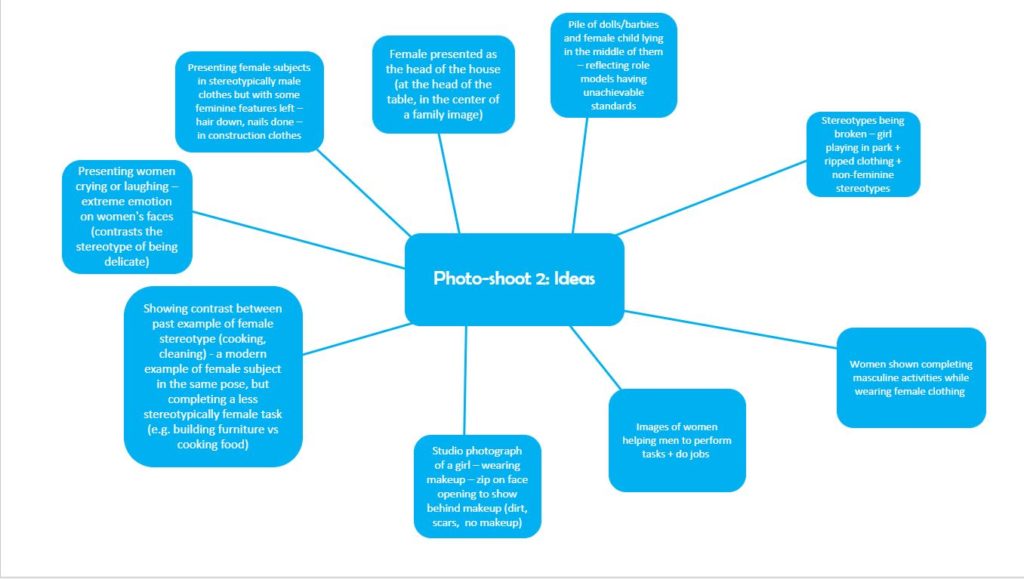
Exhibition: Invisible Hands
The exhibition The Invisible Hands looks at the migrant workforce which were farmers in Jersey. The exhibition covers their story, lives living and working conditions. These types of workers were hugely important to the farming industry in jersey. However the migrants works weren’t hugely remembered or documented.
The exhibition was done by artist Alicia Rogalska and The Morning Boat.
The exhibition featured 3 different sections from:
- A video explaining about the project and some of the stories behind the people.
- A transcript which was being printed in the wall with the 8 points ( requests on how to improve living conditions for the polish workers
- A set of images taken by the migrant workers e.g. their bedrooms, selfies – these images look at the different conditions and how the workers felt.
Images



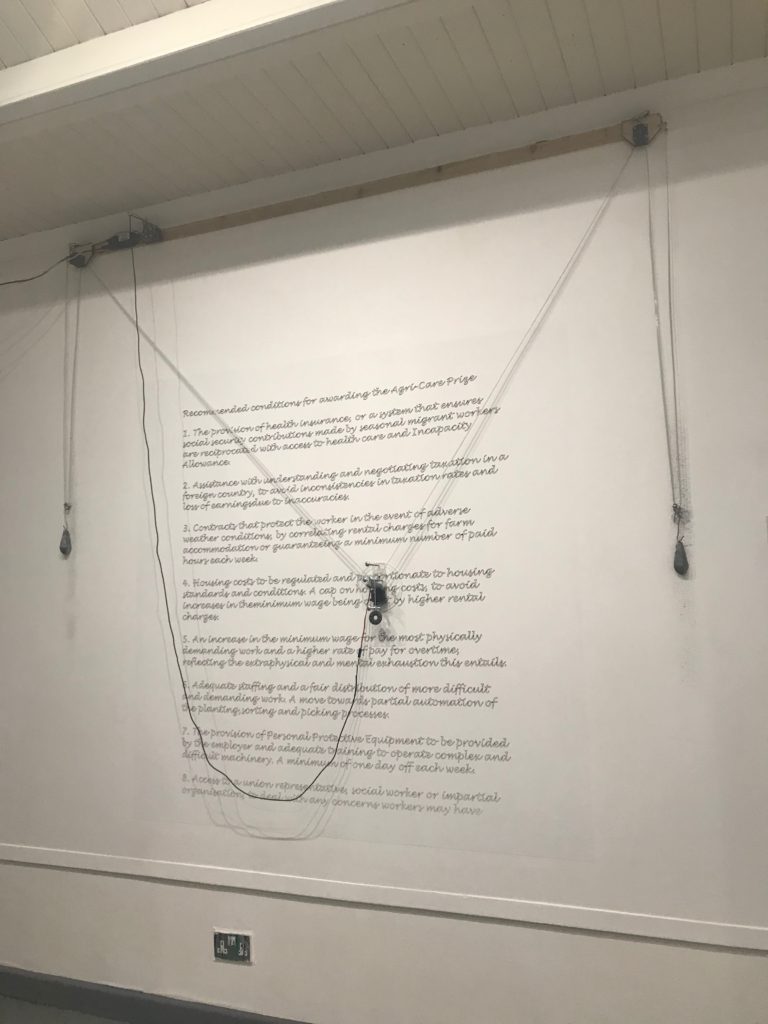
artist reference
Paul stand is an american photographer and filmmaker, He focused on modernism and straight photography.
Qoutes:
” He recognized that the camera held a patent advantage over other plastic arts in that it could freeze a moment in time and space in a way that was impossible to replicate by hand or in real time.”(Duncan,2019)
art should be able to engage the spectator spiritually and socially. He is thus associated with the idea that high art can (should indeed) accommodate abstraction and realism simultaneously(Duncan, 2019)
Image Analysis:

Visual:
In this image you can see a desolate woman in the centre, with a placard which says Blind. There is also a badge above the sign, that shows you that she is a licensed newspaper Vendor.
Conceptual/Contextual:
- The image was first produced and published in Camera Work.
- Was taken in 5 Five Points.
- Strand wanted to focus on Social problems. this was evident because the image was taken “the heart of the immigrant slums on the Lower East Side of Manhattan”(Duncan, 2019)
Technical:
This image has been taken in black and white, Medium close shot.
“achieve portraits of such arresting quality Strand devised a strategy whereby he rigged his camera with a false lens that pointed forward, while the working lens was actually placed at a ninety-degree angle and hidden from the subject’s view under his arm.”(Duncan, 2019)
Bibliography:
Duncan, A. (2019). Paul Strand Photography, Bio, Ideas. [online] The Art Story. Available at: https://www.theartstory.org/artist/strand-paul/ [Accessed 16 Dec. 2019].
Personal Investigation – Post 1 (Essay Questions)
Possible questions to investigate:
Family Photography:
How do family photographers Sam Harris and Inaki Domingo capture everyday life and the decisive moment?
Can the recreation of family portraits show how relationships have developed and changed over time?
Photography and Archives / Memory:
How has Boltanski, Abril and Toroptsov represented the concept of capturing the invisible and reflecting the meaning of memory through the medium of photography?
How have concepts of family, separation and memory been explored in the photo books of Sarello, Casanova and Germain?

Photography and Identity/ Autobiography/ self-portraiture:
In what wat is identity and autobiography expressed in the work of Chino Otsuka and Tom Hunter?
How is the work of Corrine Day and Phillip Toledano autobiographical?
Photography and Feminism/Gender studies:
How is the work of Claude Cahun and Cindy Sherman questioning the politics of gender and female stereotypes?
In what ways do photographers such as Bertien van Manen, Corinne Day and Nan Goldin represent intimacy in their works?

Photography and Portraiture:
Does portraiture idealise or criticise a sitter? Comparing the work of Arnold Newman and Yousef Karsh Does a portrait tell us more about the person portrayed or the photographer?

My question:
Can photographs actually capture feelings and emotions or can they not be taken on face value?

